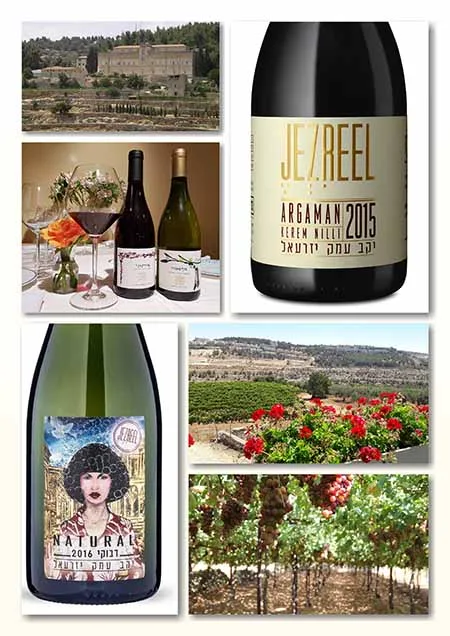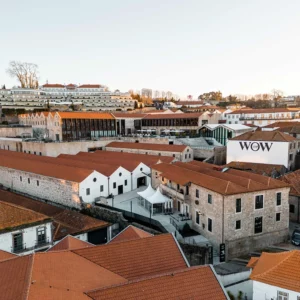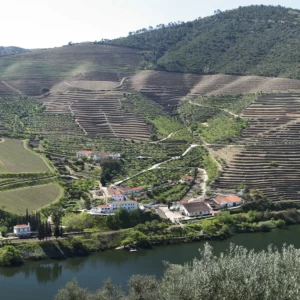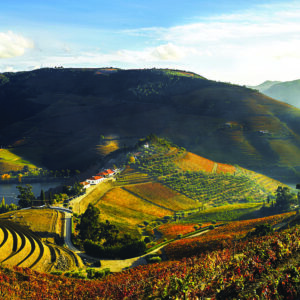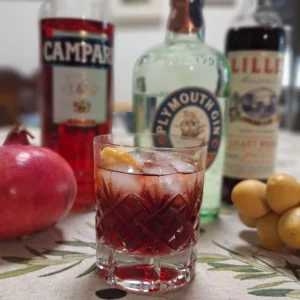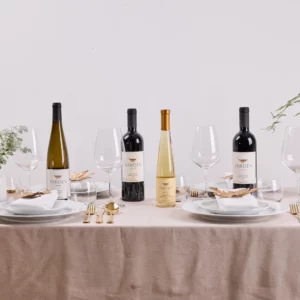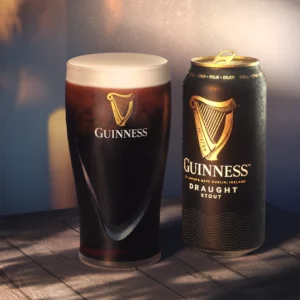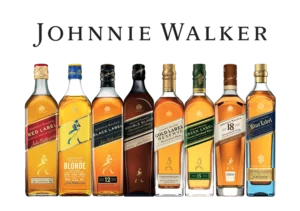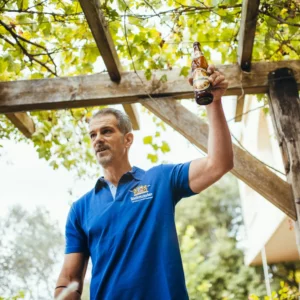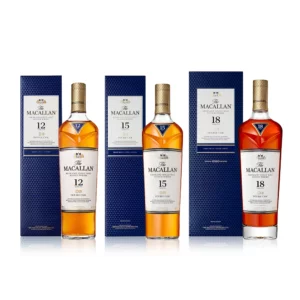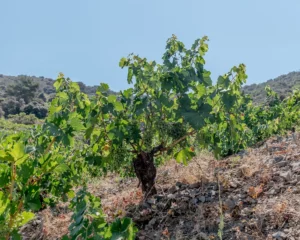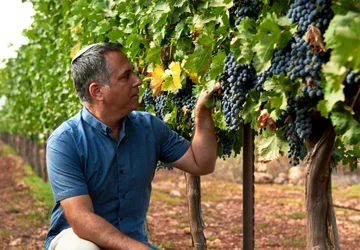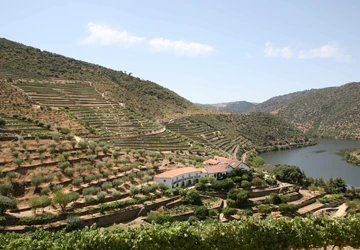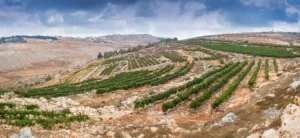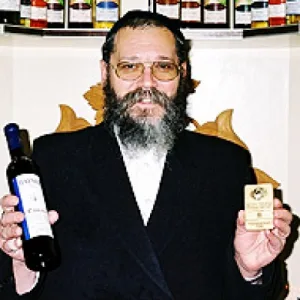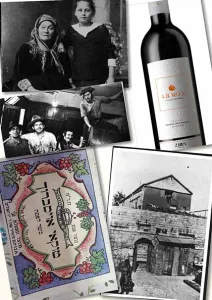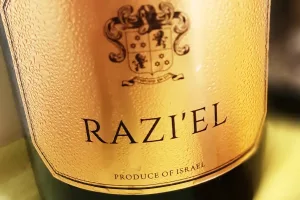For Israelis embarrassed that all we have is international grape varieties like every other wine producing country, we now have some new local varieties that are creating a noise amongst the wine intelligentsia.
First there was a tasting of Israeli wines by Jancis Robinson MW. Surprisingly, the best scoring white wine was a Hamdani Jandali blend from Cremisan Monastery. Then Recanati Winery came out with a white wine called Marawi. It gained worldwide attention. Now wineries like Feldstein, Jezreel Valley, Gvaot have also come with wines from varieties like Dabouki and Jandali. It is a new world…or rather an old world.
The pioneers were the Cremisan Winery, and Dr. Shibi Drori. Cremisan Monastery was founded over 125 years ago at Beit Jalla, a Christian Arab village near Bethlehem. It grew grapes and made wine to earn a living. However in the last 10 years they have invested in the winery and brought over one of the most illustrious wine consultants in the world (Italian Riccardo Cotarella). They then began focusing on indigenous varieties like Hamdani, Jandali, Dabouki and Baladi Asmar. Their Hamdani Jandali, a white wine blend, gained plaudits from international critics. I was certainly pleasantly surprised to visit a restaurant in New York and find the Baladi being served by the glass there!
Dr. Shibi Drori, winemaker of Gvaot Winery and agriculture & oenology research co-ordinator at Ariel University, has been undertaking ground breaking research on indigenous varieties. He and his colleagues identified over 120 local varieties, of which twenty show wine potential. The new interest in Israel of these local varieties came about because of his research.
The latest exciting launch was by Recanati Winery. They have introduced the first ever red wine made from a local grape variety called Bituni, alongside the latest expression of their Marawi (a white wine.) Both varieties are vitis vinifera, the same species used to make wine, but hundreds of years of selection have meant they have become over time more suitable as table grapes. Some of these local varieties go back a long way. There is a possible mention of the Hamdani and Jandali varieties in the Talmud. The original text is close enough to make it a likely reference, and there is an even clearer reference by Rabbi Menachem de Lunzano who lived in Jerusalem from 1550 to 1625.
Furthermore when Baron Edmond Rothschild founded the modern Israeli wine industry he planted Mediterranean varieties from the South Of France, like Carignan & Alicante Grenache, and varieties from Bordeaux like Cabernet Sauvignon and Cabernet Franc. Yet before that, when winemaking was still a domestic industry, wineries used these same indigenous grapes, grown in Arab vineyards in Bethlehem and Hebron. In those days it was mainly to make Kiddush wine for the Jewish market but there was also a demand to produce Altar & Communion wine ‘from the Holy Land’, for the Christian market. Poignant that the varieties used then should be returning now. It seems what goes around, comes around.
Back to the present, both the Bituni and Marawi were grown at an elevation of 850 meters on chalky soils. The vines were trellised on a Hebron pergola, which is like a vine sukkah with the grapes hanging down almost at eye level. This is not ideal for ‘growing wine’, but is perfectly adequate for growing table grapes. For a start, there are no bad backs from bending to harvest those precious bunches. The grapes are grown by a Palestinian grower, the Bituni near Hebron and the Marawi near Bethlehem.
Hebron is the area where 85% of the Palestinian grapes are grown. However most are not made into wine, but are used as table grapes, for raisins or to produce syrup and jams. The syrup is a kind of grapes molasses known as dibs. The natural grape juice is boiled gently on low heat to produce a natural, sweet grape syrup. It is a popular ingredient in Palestinian cuisine.
Romantically tractors can’t enter these vineyards, so donkeys are used…as they have been in this part of the world for centuries. Nothing new here. The Shor family is fond to relate how, in the mid -19th century, their grapes were carried to the winery by donkeys and the children woke up to a courtyard full of braying donkeys! Plus ça change, plus c’est la même chose.
The Marawi was first launched with the 2014 vintage, which created a great deal of noise in the international press and drew worldwide attention to Shibi Drori’s pioneering work. Marawi is in fact a synonym for the Hamdani.
Historically the Marawi was the name used west of Jerusalem and Hamdani was used more in the Bethlehem, Hebron area. However the first wine was certainly interesting but not great.
I suppose the interest was less in the wine per se, and more in the fact that a wine had been produced from an ancient local variety. The fact it existed at all dwarfed the fact of whether it was any good! By the way there is nothing wrong in that. A wine is never just a drink and you can’t disconnect what you sip from its place of origin and its personal history…and the story in this instance was very special.
The 2015 Marawi was far better showing good minerality and a balancing acidity. Now the 2016 has just been launched and it is also good but different. It is more aromatic and shows more personality. As for the Bituni, it was quite a find. It has the lightness and freshness of a Gamay and the perfume reminiscent of a Pinot Noir or Grenache.
The Marawi and Bituni are fascinating additions to the local wine scene. They are products of a noble partnership. These are Holy Land varieties, with a Palestinian (Muslim) grower and Israeli (Jewish) winemaker. It sounds like a joint venture with more hope than Oslo……and at the end of all the unrequited hope, at least you have a bottle of wine out of it with which to drown your sorrows!
Interestingly, whereas Recanati chose Marawi, and have even planted Marawi in their Upper Galilee vineyards, Shibi Drori himself chose to go with the Jandali, producing a wine made from the variety at his Gvaot Winery situated in the central mountains region.
As for Dabouki, it is a special variety because apart from being a dominant variety in Hebron, it was also well planted in Israel. Here it was used for surreptitious blending, which was done quietly, or it was distilled to make brandy. Of course in those days, Israel had a booming brandy market which has largely disappeared. The pioneer here of Dabouki is Avi Feldstein, who makes handcrafted wine in his own Feldstein Winery and his Dabouki comes from 40 year old vines in the Mount Carmel region.
Argaman is also an Israeli variety, but does not have ancient roots like the others. It was developed here and is a cross between Souzoa, the Portuguese variety, and Carignan. The first Argaman wine was launched as recently as the early 1990’s. It was a grape bred for color and blending, and was not considered very distinguished. One imaginative winemaker thought differently.
This was the aforementioned Avi Feldstein, then winemaker of Segal Wines. He planted Argaman in the Upper Galilee in 1999 and tried to treat it with the respect he thought it deserved. The result was an award winning wine which made people think again about this variety. Today Jezreel Valley, a small boutique winery which specializes on ‘Israeliness’, makes a very good Argaman from old vine vineyards in the Mount Carmel area.
The successful owner of the famous Taybeh Brewery, have recently also opened a winery in the West Bank. They sell international varietals under their Nadim label, but they are experimenting with Zeini, another local white variety and Bituni. I love the way the new interest in these old varieties crosses boundaries and political divides, after all wine is above politics, isn’t it? So, interesting times lie ahead as we learn more about these fascinating varieties.
Keep a look out for Argaman, Baladi and Bituni amongst the reds, and Dabouki, Jandali, Marawi / Hamdani and Zeini amongst the whites. The ancient and old, becomes new. Maybe these varieties will be part of Israel’s future. They are certainly part of our past.
Cremisan Star of Bethlehem Hamdani Jandali 2016 Aromatic with tropical fruit, fresh nose, and a broad flavor in the mouth. Slightly lacking acidity but represents good value. PRICE: NIS 55
Jezreel Pet-Nat Dabouki 2016 A ‘natural petillant’ wine, known as a Pet-Nat, made from 35 year old Dabouki grapes. A fun wine, lightly sparkling, with aromas of green apple. Great label and beer bottle closure. PRICE: NIS 89
Recanati Marawi 2016 This has an attractive flowery nose, and though less minerally than the 2015, it has a well-balanced finish. PRICE: 99
Gvaot Gofna Jandali 2016 Flinty nose with flowery fruit and pronounced acidity on the finish. PRICE: 115
Feldstein Dabuki (sic) 2015 This is dominated by a nose of honey & wet straw while there is fresh finish. Slightly funky, but it is an authentic expression of the most Israeli of the indigenous varieties. PRICE: NIS 135
Segal Rechesim Dovev Argaman 2014 Deep colored with aromas of black fruit, well integrated oak and sweet vanilla. It has a taste of ripe plum and forest fruits with a refreshing tannic, slightly acidic finish. PRICE: NIS 79.
Recanati Bituni 2016 Light, cherry berry fruit, easy drinking with good balancing acidity. Serve it chilled. Enjoyable wine. I thought it was very drinkable and it is comparatively low alcohol too. PRICE: NIS 99
Jezreel Valley Argaman 2015 A quality red wine with good berry fruit, a hint of spice and a herbal note. I like the texture which makes the wine refreshing. It has a clean but lengthy finish. PRICE: NIS 160
Adam Montefiore has been advancing Israeli wines for over 30 years and has been referred to as the ‘the ambassador of Israeli wine.’ He is the wine writer for the Jerusalem Post. www.adammontefiore.com


